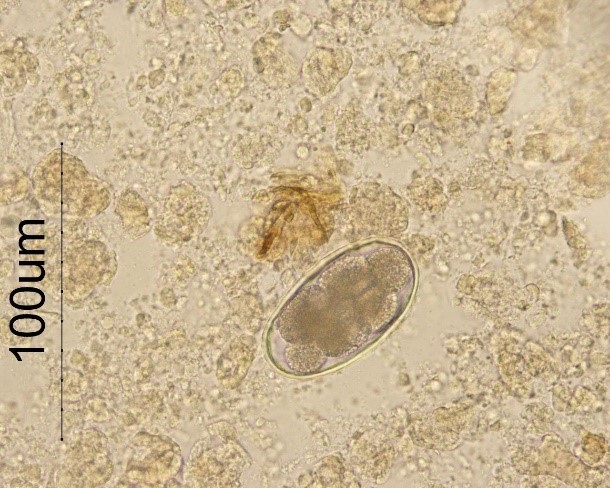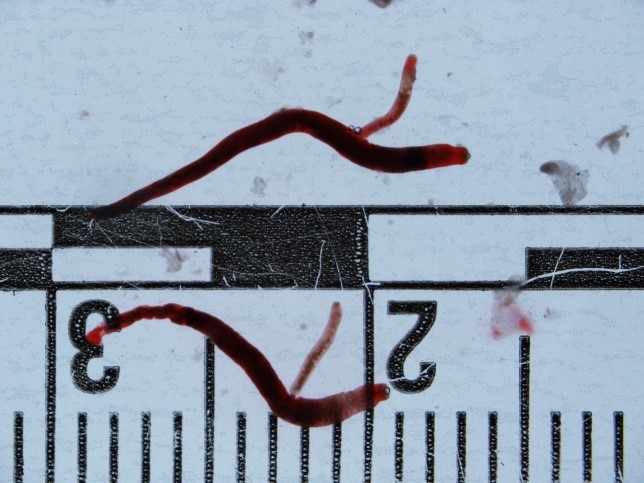Gapeworms
(Mammomonogamus spp.)
Gapeworms are strongylid nematodes of the respiratory system that can infect a wide range of hosts, although M. ierei and M. auris appear to be host specific. Neither M. ierei nor M. auris are considered zoonotic, although other Mammomonogamus spp. can be.
Distribution
Mammomonogamus has a disparate distribution in cats with M. ierei reported in the Caribbean and M. auris reported in China, Japan and Sri Lanka. Non-specified species also have been reported in wild felids in Africa, Thailand, South, Central and North America [1].
Clinical signs
Cats can be asymptomatic. When clinical signs are present they can include inflammation of the nasopharynx resulting in a mucoid nasal discharge, coughing, sneezing episodes and weight loss (M. ierei) and head shaking with M. auris [1].
Diagnosis
Eggs shed via the faeces or sputum and may be observed by simple floatation (SOP1). Mammomonogamus ierei eggs are ovoid and approximately 49.5 × 92.0 μm (Fig. 1). Although the eggs of Mammomonogamus superficially resemble those of hookworms, they can be easily distinguished from the latter based on their larger size and the thicker striated shell. Otoscopic examination also can be used for M. auris diagnosis with the adult worms visible and presenting as a “Y” shape (Fig. 2). Occasionally, the adult worms are expelled by the host [1].

Figure 1. Egg of Mammomonogamus on a faecal float (Image credit: Dr. J. Ketzis)

Figure 2. Mammomonogamus paired male and female adult worms (Image credit: Dr. J. Ketzis)
Treatment
Fenbendazole (50 mg/kg PO daily for 5 days) was shown to be effective in treating M. ierei. Selamectin and a combination of thiabendazole, dexamethasone and neomycin have been used to treat M. auris. Since mebendazole and ivermectin have been used to treat Mammomonogamus in other hosts, this suggests that both benzimidazoles and macrocyclic lactones could be effective in cats.
Prevention and Control
The route of infection is unknown and hence prevention and control measures are unclear. It is believed that infection is likely through intermediate or paratenic hosts; therefore, preventing cats from hunting and eating insects should decrease the risk of infection.
Public health considerations
Mammomonogamus spp. infecting cats have not been identified as zoonotic.
References
[1] Červená B, Hrazdilová K, Vallo P, Ketzis J, Bolfa P, Tudor E, Lux-Hoppe EG, Blanvillain C, Modrý D. Mammomonogamus nematodes in felid carnivores: a minireview and the first molecular characterization. Parasitol. 2018;21:1-10.
